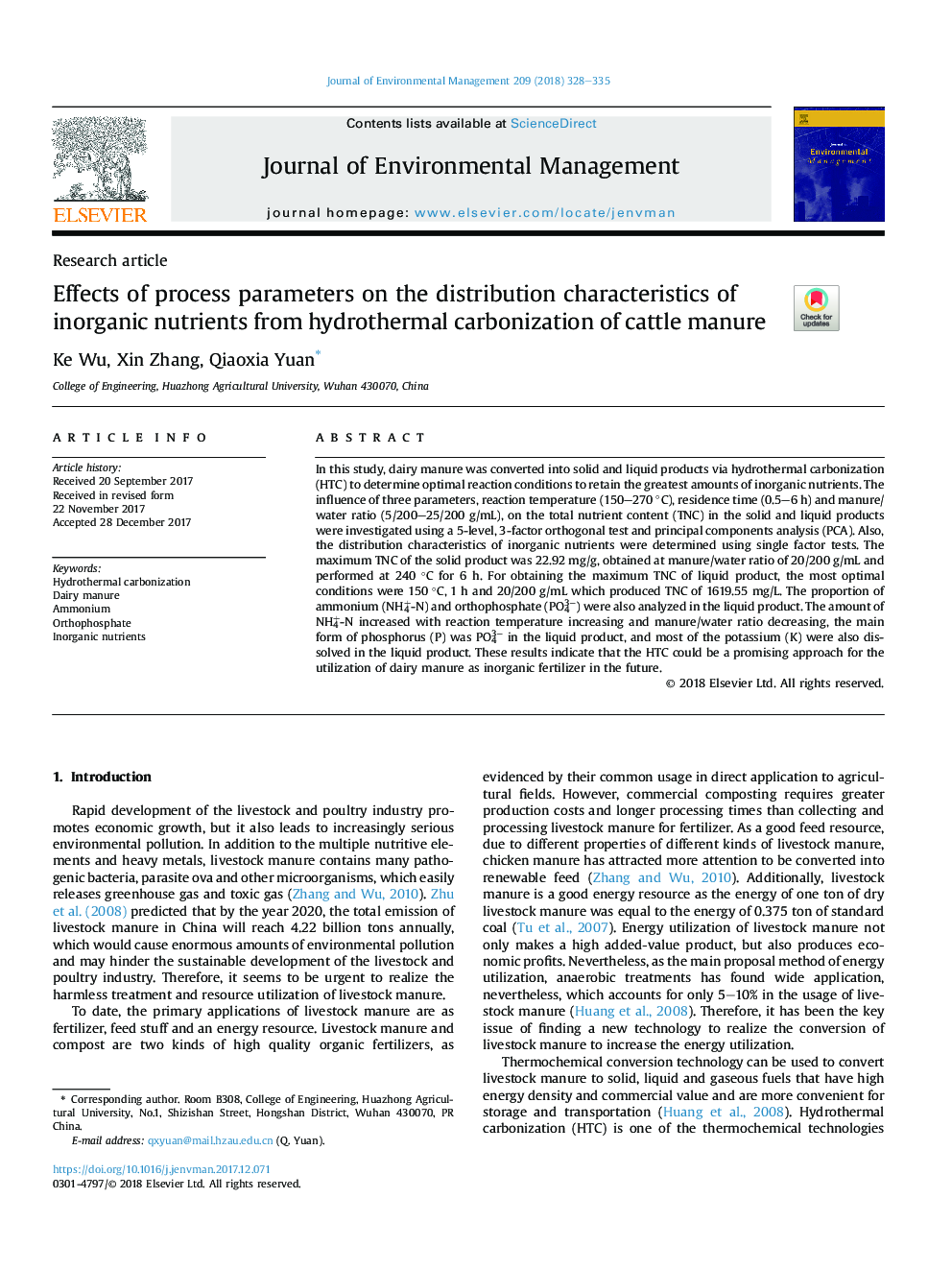| Article ID | Journal | Published Year | Pages | File Type |
|---|---|---|---|---|
| 7478472 | Journal of Environmental Management | 2018 | 8 Pages |
Abstract
In this study, dairy manure was converted into solid and liquid products via hydrothermal carbonization (HTC) to determine optimal reaction conditions to retain the greatest amounts of inorganic nutrients. The influence of three parameters, reaction temperature (150-270 °C), residence time (0.5-6 h) and manure/water ratio (5/200-25/200 g/mL), on the total nutrient content (TNC) in the solid and liquid products were investigated using a 5-level, 3-factor orthogonal test and principal components analysis (PCA). Also, the distribution characteristics of inorganic nutrients were determined using single factor tests. The maximum TNC of the solid product was 22.92 mg/g, obtained at manure/water ratio of 20/200 g/mL and performed at 240 °C for 6 h. For obtaining the maximum TNC of liquid product, the most optimal conditions were 150 °C, 1 h and 20/200 g/mL which produced TNC of 1619.55 mg/L. The proportion of ammonium (NH4+-N) and orthophosphate (PO43â) were also analyzed in the liquid product. The amount of NH4+-N increased with reaction temperature increasing and manure/water ratio decreasing, the main form of phosphorus (P) was PO43â in the liquid product, and most of the potassium (K) were also dissolved in the liquid product. These results indicate that the HTC could be a promising approach for the utilization of dairy manure as inorganic fertilizer in the future.
Related Topics
Physical Sciences and Engineering
Energy
Renewable Energy, Sustainability and the Environment
Authors
Ke Wu, Xin Zhang, Qiaoxia Yuan,
